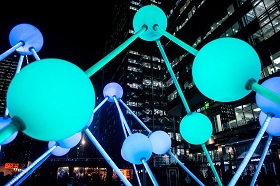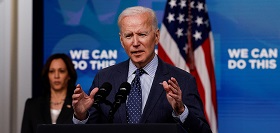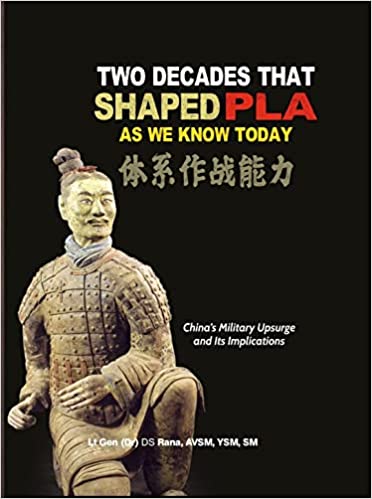Discussions about a new world order have been going on for decades now. And the COVID-19 pandemic has only spurred such conversations on. Some researchers see the post-COVID world as something fundamentally different from anything that has come before. In this author’s opinion, we cannot reset the international agenda back to zero. That said, the coronavirus crisis is a clear marker of the development trajectory of the global political system. The biological basis of COVID-19 and, more importantly, its political, economic and social aspects, demonstrate that there is no getting away from the fact that globality is a characteristic of the modern world.
The theoretical and methodological basis of this article relates to the theory of sustainable development, while also drawing from comparative and historical and genetic approaches. The author believes that the “indivisibility” of the world order is inextricably linked to the international agenda that has been formed. At the core of this agenda are issues of control over weapons of mass destruction, the transition to a new technological order and interaction within global commons. At the same time, the natural environment can also be considered a global common. This non-traditional approach in international relations is backed up by the large number of environmental accidents and disasters in recent times, which invariably have an international dimension.
By the end of the 2010s, the world was facing a dangerous combination of old and new threats. Attempts made during that decade to “revive” the status of the nation state as a subject capable of solving any and all domestic and foreign problems by itself turned out to be untenable. However, globalization as we currently know has shown that its adaptive potential is wholly inadequate in a world that has proved to be more dangerous than we thought. It is the belief of this author that globalization, as a process of strengthening interconnections and interdependence, will only intensify. Although a new model of globalization will come to replace the version we know today. The COVID-19 pandemic has shown us that the number of significant players that are capable of acting like a state when it comes to imposing emergency measures has grown considerably: in 2020–2021, regions, local communities and multinational corporations were given a mandate to govern in extraordinary situations. And it is unlikely that they will simply hand these new powers back once the pandemic is over. Perhaps the widespread – and not always justified – criticism of the World Health Organization (WHO) and the United Nations (UN) will prove to be a decisive step towards turning the UN family into a full-fledged supranational institution with advisory, analytical and also decision-making powers.
The “return” of Westphal as a course towards re-sovereignization or globalization is a false dilemma. The nation state is still faced with a subtle yet extremely important task, which is to create an environment for cooperation. And it is those who have learned how to cooperate that will fit in with the economy of the 21st century. We will not see a new version of Westphalian sovereignty, nor will globalization continue in its current form. It is simply a question of timing. But the most important question is: Will Globalization 3.0 will have enough time to crank fully into gear and become an “antidote” to existential threats before an environmental or global political collapse befalls us?
The COVID-19 pandemic was arguably the most important event of 2020—perhaps, bearing significance for the entire decade. As the disease proliferated across the globe from January to August 2020, the views of politicians, the expert community and individuals on how bad the situation would turn out to be started to change. At first, many pundits believed that the response of the world’s leading countries to the new biogenic threat would entail the collapse of globalization, with the pandemic seen as the culmination of the 2010s, a decade largely characterized by a “nationalization” of world politics or a re-sovereignization of the nation state. “Re-sovereignization” stands to mean a certain propensity to concentrate power at the national level while backtracking on delegating state functions to transnational and supranational bodies. In fact, this is exactly what we saw in a number of countries—complete closures of state borders, the egoism of national health systems and intergovernmental global structures (the WHO and the like) and integration associations (such as the European Union) coming under criticism. The European Union demonstrated little solidarity during the early weeks of the coronavirus crisis as the situation was drastically deteriorating in Italy and Spain.
Things, however, eventually started to even out. The EU is starting to look more and more like the aphorism of capitalism—while it often falls ill, it never dies. However, other integration associations, whether the Eurasian Economic Union (EAEU), the Association of Southeast Asian Nations (ASEAN) or others, fared no better since all national borders were abruptly closed in the spring, while first coordinated efforts against COVID-19 did not appear until the summer of 2020.
Should this suggest that the pandemic has come to accelerate re-sovereignization? Is the nation state making a comeback as the basic model of social life for the global community, returning to the “golden age” of the Westphalian model? Does the collapse of the much-wanted but never-realized liberal world order represent the end of globalization?
No. Rather, the situation has a pronounced state-centric dynamic—however, a closer examination reveals many less noticeable but far more important contours of world politics that will arguably determine the architecture of international interactions in the future. No matter what happens, though, the world system cannot go back to the way it was, since the global agenda and the key challenges of our time presuppose transnational institutions and global mechanisms for joint action. There are more than enough explanatory models of the world order based on “pure” Westphalianism. However, they appear to be of little help when it comes to understanding fundamental processes. Few alternatives to the global nature of world politics are clearly seen in a number of basic issues, such as arms control, the technological structure of the economy and the functioning of global commons.
Arms Control: When the Whole is More Important than Ingredients as Such
The 2010s were marked by a consistent dismantling of the international regulatory arms control framework, with the WMDs being the most important aspect to consider. Of course, the United States plays first fiddle in this. Eminent experts have offered a number of explanations in this respect. However, President Donald Trump’s unwillingness to extend the New START without China as a signatory (newly inaugurated President Joe Biden nevertheless prolonged the treaty in February 2021for five years, but this was little more than a half-measure) and the U.S. withdrawal from the 1987 INF Treaty and the 1992 Treaty on Open Skies in 2020 mean convincing the American elites that a change has taken place in the global balance of powers. Clearly, not enough attention has been paid to this.
Despite the fact that China is still way behind Russia and the United States in terms of its nuclear warheads (according to the data available in open sources), it has still managed to become the second-largest economy in the world in recent years. The nation is rapidly modernizing and increasing its share of hi-tech exports. China’s economic and technological expansion has now become global. It is cementing its positions along the periphery (in Africa and in Latin America) while expanding its footprint at the core of the international system (in Europe and in the United States). The Huawei 5G scandal is testament to this. As a result, the West has started to regard China’s increasing power as a real threat, with its nuclear arsenal having turned into one of the threat’s most visible components. This is why inviting China to join treaties such as New START is rather logical. Judging from their public declarations, the political elites in the West adhere to the principles of holism when approaching such issues. That is, they consider the whole (i.e. aggregate power) to be more important than the part (a relatively small arsenal of WMDs).
But it is far from enough to only involve China in control and restrictive mechanisms. An aggravated situation on the border between China and India in the summer of 2020 and the constant tensions in India–Pakistan relations suggest that it would be worthwhile involving all countries of the “nuclear club” in this cooperation. Of course, the nuclear potentials of most of its participants are tiny as compared to the nuclear deterrent forces of Russia and the United States. But these weapons should not be counted in and of themselves, but rather as part of their aggregate power. The U.S. posture papers, where China has ousted Russia as the number one threat, also rely on this logic. In the case of states that have nuclear deterrent forces (apart from Russia and the U.S.), the Treaty is intended not so much to reduce nuclear arsenals as to limit their growth: India, Pakistan and Israel cannot be “shoehorned” into the NPT of 1968, while a new agreement among the “nuclear club” to include these countries would immediately serve to enhance their status on the world stage.
China is a prime example of how rapid economic growth can change the way other major international actors view relatively small nuclear capabilities. In other words, China’s today profile may very well repeat itself with India in the future. In this respect, making a future START-like treaty global in nature appears to be more of a trend rather than a dead-end (or yet) initiative of the eccentric Donald Trump. A complete dismantling of the U.S.–Russia bilateral treaty base in this area, while lowering trust (or destroying it altogether, as the official statements of the Russian and American sides would suggest), increases the chances of new multilateral agreements being concluded.
A propensity for multilateral action largely belongs to the realm of post-Westphalian logic as a manifestation of globality that takes non-military aspects into account when dealing with military and political issues. The ongoing dismantling of U.S.–Russia bilateral agreements and the development of an international arms control regime is akin to transforming an old two-screen cinema into a modern multiplex. It is comforting that leading Russian experts on nuclear safety, for example A. Arbatov, admit this in their publications [1].
The Technological Structure of the Economy of the 21st Century: A Breakthrough into the Future and the State as a “Day Watchman”
As breakthrough economy is going global, the process is based on close international cooperation. Klaus Schwab’s Fourth Industrial Revolution, which caused quite a stir in business circles and among IR experts, attained something of a cult status due to how close it was to reality. Schwab’s words are quite literally turning into a reality by the month, not even by the year! While Schwab did not coin the concept of the fourth industrial revolution, he has certainly been successful in making it popular. That notwithstanding, it is hard to disagree that AI, robotization, blockchain and many other technologies of the new era have now become part of our everyday reality, with the possibilities rapidly expanding.
A feature of Industry 4.0 that cannot be ignored is that all the key technological solutions of the new economy and the new world would be impossible without international cooperation. It is not states that are the main actors in this, but rather multinational corporations, research centres and university thinktanks, and real battles for the most intelligent researchers are unfolding. This is not to say that the role of the state is not important, though. The nation state is still faced with a subtle yet extremely important task, which is to foster an environment for cooperation. It is those who have learned how to cooperate that will fit in with the economy of the 21st century.
Industry 4.0, which is global in its genesis and transnational in how it functions, will form the core of the post-Westphalian economy. Westphalian thinking and its potential for isolationism loses out here, too.
Global Commons: Danger is Always Imminent
Global commons typically include the atmosphere and outer space, the polar regions and cyberspace. Yet, it would be reasonable to point to one more global common in the political domain. This would be the natural environment. While formally divided into national segments, it can function as a single whole. Even if the sceptics are right and climate change is not primarily an outcome of human activities, the problems relating to littering the planet with rubbish, deforestation and a sharp decline in biodiversity are clearly man-made. It is important to bear in mind that biogenic threats, such as COVID-19, are all linked to decreasing biodiversity and a deterioration in the quality of life and health of people due to the degradation of the environment. The forecasts of epidemiologists are not bright: the coronavirus crisis of 2020–2021 is the first of a multi-episode global biogenic hazard that will always be imminent or looming.
Even then, states have demonstrated that they are more likely to distance themselves from one another than seek to assume mutual obligations. The attempt of the U.S. to leave the WHO are particularly telling in this regard. Donald Trump’s moves can be seen as his willingness to relieve himself of the responsibility for for his confrontation with China as well as for the rapid spread of COVID-19 in the U.S. in the run-up to the elections. Other states, however, have also shown their readiness to politicize the pandemic. The story of the first vaccine against COVID-19—registered in Russia but inviting numerous questions from the expert medical community—is just one example.
Despite the obvious irrationality, national egoism and other destructive tendencies, the need to agree on all these issues will force governments to step up cooperation and devise new mechanisms for the regulation and management of global commons. Moreover, while states will preserve the principle of “one country, one voice on the international stage” for the foreseeable future, the process of coordinating positions in an internal environment will become increasingly complicated, and business structures, third sector organizations and domestic regions will be more actively involved in it. Incidentally, it was the COVID-19 pandemic that unexpectedly gave sub-national entities and even local communities (municipalities) greater political influence than they had ever had before. Whenever humankind faced external threats in the past, power was always vested with a global “centre,” which is not the case now. In general, devolution and subsidiarity became key political processes in 2020, while the form of government and political regime are secondary here: regional and local authorities from China to Portugal, from Canada to Argentina and South Africa, were given extraordinary powers, even to impose curfews. Westphalianism has lost to globalization here, too. Globalization is not what it used to be, though.
Globalization 3.0: Contours and Possibilities
Critics of globalization are quick to pronounce its death, presenting it as one of the main “victims of world politics,” but they forget that this phenomenon has its own dynamics. At least two models of globalization have emerged over the past 50 years:
- Globalization 1.0 (1970s–1990s): the West as the “trend-setter” and a dominant player in world politics.
- Globalization 2.0 (2000s–present day): the emergence of non-Western centres of power that offer alternative models of the world order. Globalization 2.0 is essentially a re-styling of Globalization 1.0 (the changes are more of a cosmetic nature, leaving the “engine” effectively the same as it was).
The crisis of globalization that has so much been bandied about in recent years is, in fact, a crisis of Globalization 2.0. However, globalization amid the contemporary settings can be compared to a monarch: “The king is dead, long live the king!” The main features of its possible replacement – Globalization 3.0 – would be:
- vibrant global supranational and transnational international institutions;
- a consensus on WMD and environmental issues;
- no “controlling stake” for any nation state in world politics (the axiom that unipolarity is simply unattainable);
- a multi-actor global order where states from the N-11 group that had been less visible in the past (such as Indonesia or the Philippines), as well as other players (for example, in April 2020, the authorities of the Canadian province of Alberta negotiated with the U.S. government on the introduction of duties on oil from Saudi Arabia and Russia behind the back of the official Ottawa) would gain serious political clout in world affairs.
Moving to a new version of globalization is rather similar to a transition from gas engines to electricity as a source of energy. In both cases, the entire infrastructure will need to be changed for the new system to function properly.
Homo Sapiens means Homo International
It would seem that the generally accepted failure of Francis Fukuyama’s “end of history” as an opportunity to bring humanity to a single ideological, political and economic denominator is nothing more than an argument in favour of strengthening the nation state. However, numerous socio-political models in the “small” world of the 21st century, shrinking under the sway of digital revolution, suggests the need for cooperation on a wider range of issues. This contributes to transnational and supranational institutions growing in strength. The overdue reform of the UN system can be useful in this regard. In other words, the variability of the models of the socio-political and socio-economic structure underlies the strengthening and development of interdependence, which is the foundation of globalization.
The project to rebuild the architecture of world politics can successfully be implemented within the framework of Globalization 3.0. However, we must admit that humanity will have to go through a “bottleneck” in the coming years. In primitive times, tribes used to come together to solve common problems. Now it is up to states and international institutions to come together to address the common agenda of the 21st century.
Multilateralism is no longer an abstract theoretical concept; it is a practical model that is extremely difficult to put together, yet urgently needed in international “everyday life.” Given the gravity of the issues currently on the agenda for humanity, there is no other viable alternative. History has shown us that joint actions do not always guarantee success as the world does not necessarily follow the path of sustainable and responsible development.
However, the attempt to run away to our respective “national apartments” during the impending “existential environmental” crisis is a sure-fire path to failure. Not to be alarmist, but action is needed, as we are approaching a situation where no single state can benefit if addressing the issues outlined above does not benefit everyone involved. The COVID-19 pandemic is a triumph for globalization, an historical judgement about the absence of an alternative and a warning to humanity that common issues need to be resolved through common efforts, because the Earth does not have a “backup.” Social distancing can save the life of an individual, but de-internationalizing global politics will lead to the death of all humankind before a war or pandemic gets the chance.








